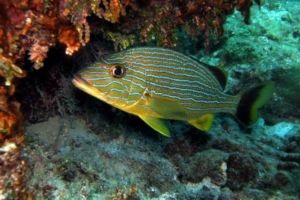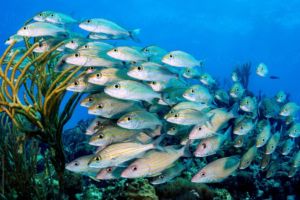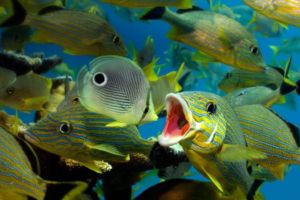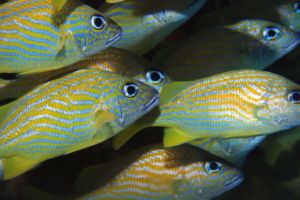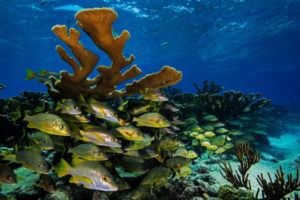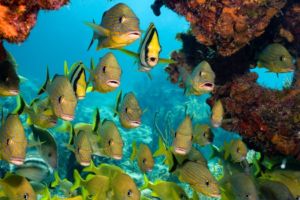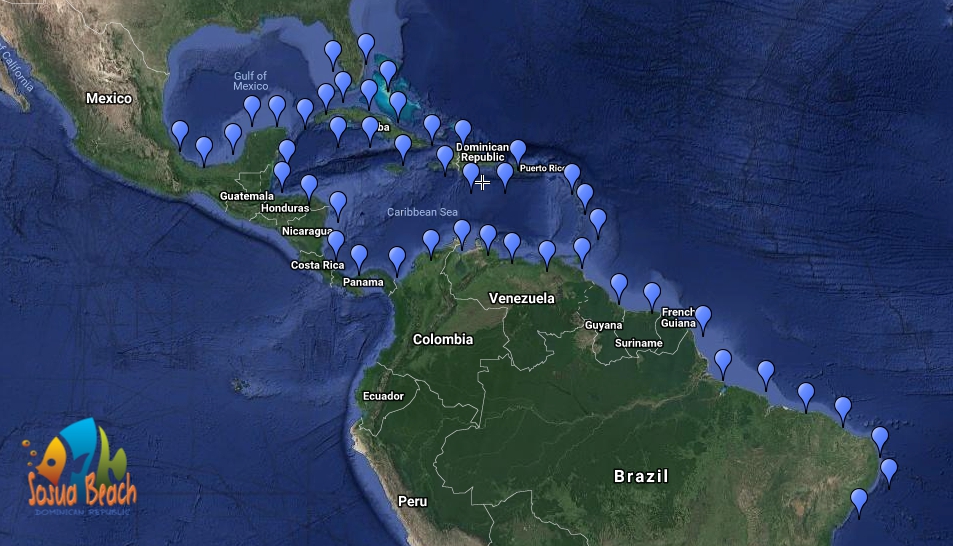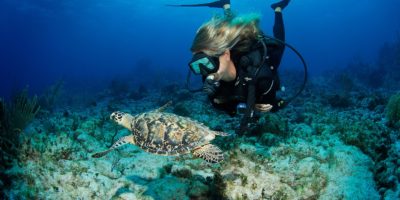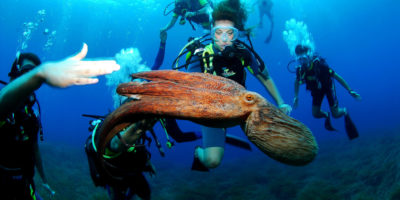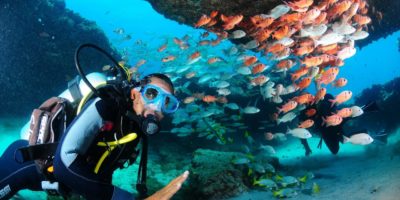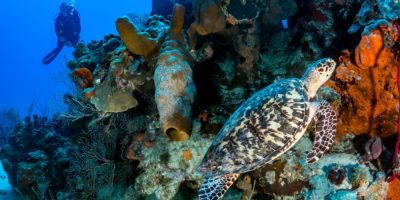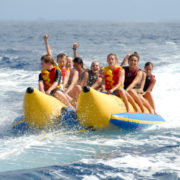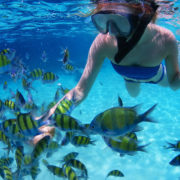French grunt (Haemulon flavolineatum) are the silvery white, yellow striped fish most divers find near reefs in Sosua. Their name is attributed to the noise they make when grinding their teeth, a sound similar to grunting in pigs. This fish is popular not only in reefs, but also in aquariums worldwide.
Photo Gallery
The French grunt is quite easy to identify, as their oblong shape, red mouth and distinctive stripes on the side of the body give it a uniqueness among Caribbean reef fish. The head is blunt, mouth small with thick lips. It has pelvic fins below the base of the pectoral fins.
Habitat & Range
Haemulon flavolineatum is native to the Western Atlantic Ocean, including the Gulf of Mexico, Bermuda and the area from South Carolina down to the Caribbean Sea and Brazil. It is distributed between subtropical coordinates 34°N – 34°S, 98°W – 34°W; Very common around the West Indies and Antilles, it is called Bocayate de Piedra by fishermen of the Dominican Republic.
It travels in large schools at depths from 0-60 meters (0-197 ft) and lives among coral reefs, under ledges and close to elkhorn coral in warm waters of 25-27⁰C. Juveniles Grunts often stay within seagrass beds in bays and lagoons.
Feeding Habits
French Grunt mostly feeds at night on small benthic crustaceans, mollusks, macro-invertebrates, and polychaetes (a paraphyletic class of annelid worms) scavenging the seagrass beds close to coral reefs and mangrove areas at night. Juveniles often feed during the day on copepods, crab larvae, amphipods and shrimp.
Size & Growth
French Grunt grows a max of 30.0 cm (11.8 inches ), most commonly seen at lengths of 17 cm (6.7 inches). Juveniles have lighter colors, with distinct black or dark brown horizontal stripes, also a black spot at the base of the caudal fin.
Reproduction
This species is a pelagic spawner, and does it year round at night. A pair rise together so the female can release thousands of spherical eggs that later hatch into larvae 2 weeks later. When they finish the planktonic stage, juvenile move to feeding grounds in shallow reefs and seagrass beds.
On Video
Sources:


